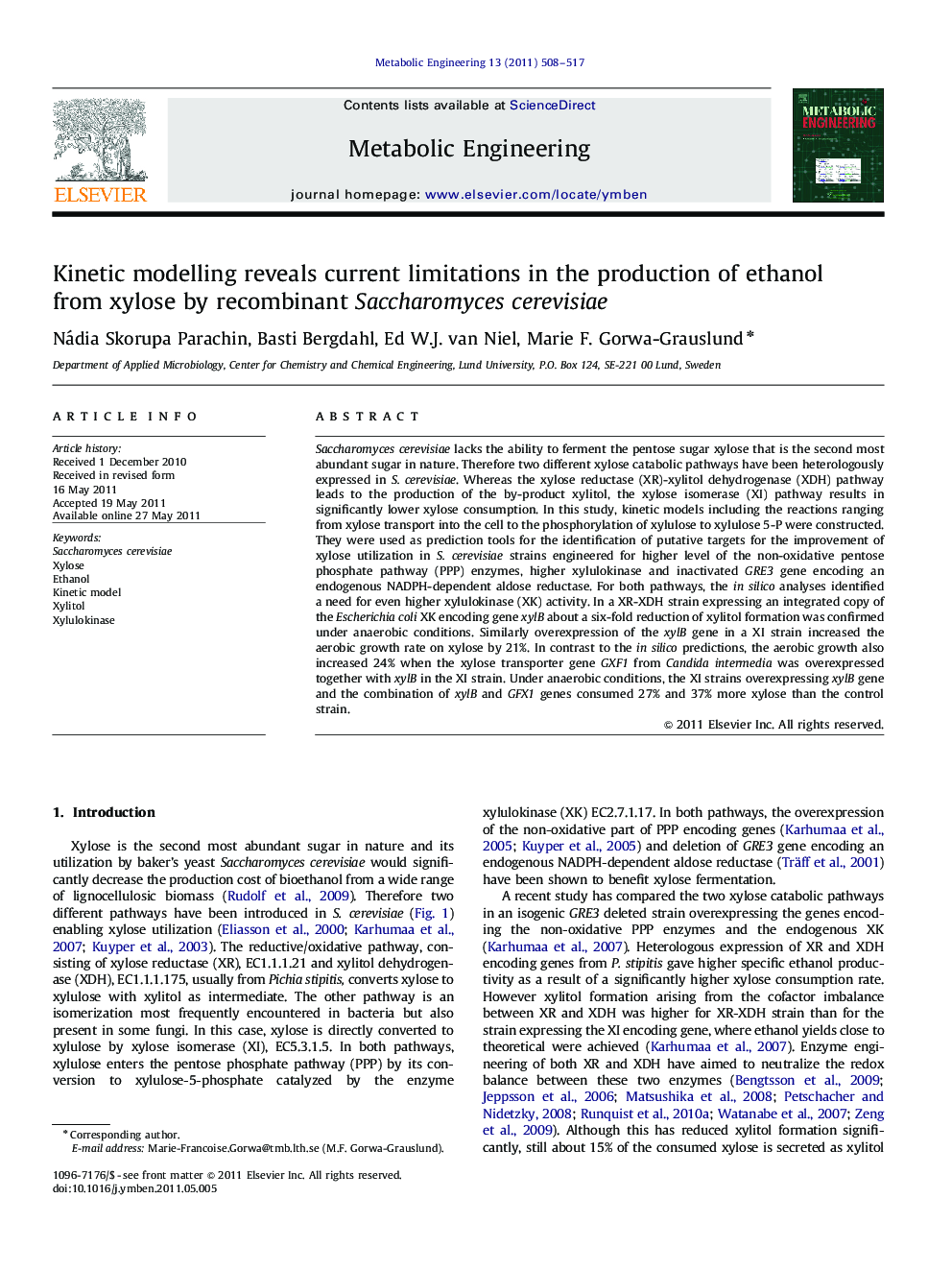| کد مقاله | کد نشریه | سال انتشار | مقاله انگلیسی | نسخه تمام متن |
|---|---|---|---|---|
| 31610 | 44824 | 2011 | 10 صفحه PDF | دانلود رایگان |

Saccharomyces cerevisiae lacks the ability to ferment the pentose sugar xylose that is the second most abundant sugar in nature. Therefore two different xylose catabolic pathways have been heterologously expressed in S. cerevisiae. Whereas the xylose reductase (XR)-xylitol dehydrogenase (XDH) pathway leads to the production of the by-product xylitol, the xylose isomerase (XI) pathway results in significantly lower xylose consumption. In this study, kinetic models including the reactions ranging from xylose transport into the cell to the phosphorylation of xylulose to xylulose 5-P were constructed. They were used as prediction tools for the identification of putative targets for the improvement of xylose utilization in S. cerevisiae strains engineered for higher level of the non-oxidative pentose phosphate pathway (PPP) enzymes, higher xylulokinase and inactivated GRE3 gene encoding an endogenous NADPH-dependent aldose reductase. For both pathways, the in silico analyses identified a need for even higher xylulokinase (XK) activity. In a XR-XDH strain expressing an integrated copy of the Escherichia coli XK encoding gene xylB about a six-fold reduction of xylitol formation was confirmed under anaerobic conditions. Similarly overexpression of the xylB gene in a XI strain increased the aerobic growth rate on xylose by 21%. In contrast to the in silico predictions, the aerobic growth also increased 24% when the xylose transporter gene GXF1 from Candida intermedia was overexpressed together with xylB in the XI strain. Under anaerobic conditions, the XI strains overexpressing xylB gene and the combination of xylB and GFX1 genes consumed 27% and 37% more xylose than the control strain.
► Kinetic models were constructed for both XR-XDH and XI pathways.
► These were used for the improvement of xylose utilization in Saccharomyces cerevisiae.
► Genetically modified strains were used to in vivo to validate the model predictions.
► In both models higher levels of XK were necessary.
► Novel XR-XDH strains produced xylitol equivalent to that of XI strains.
Journal: Metabolic Engineering - Volume 13, Issue 5, September 2011, Pages 508–517